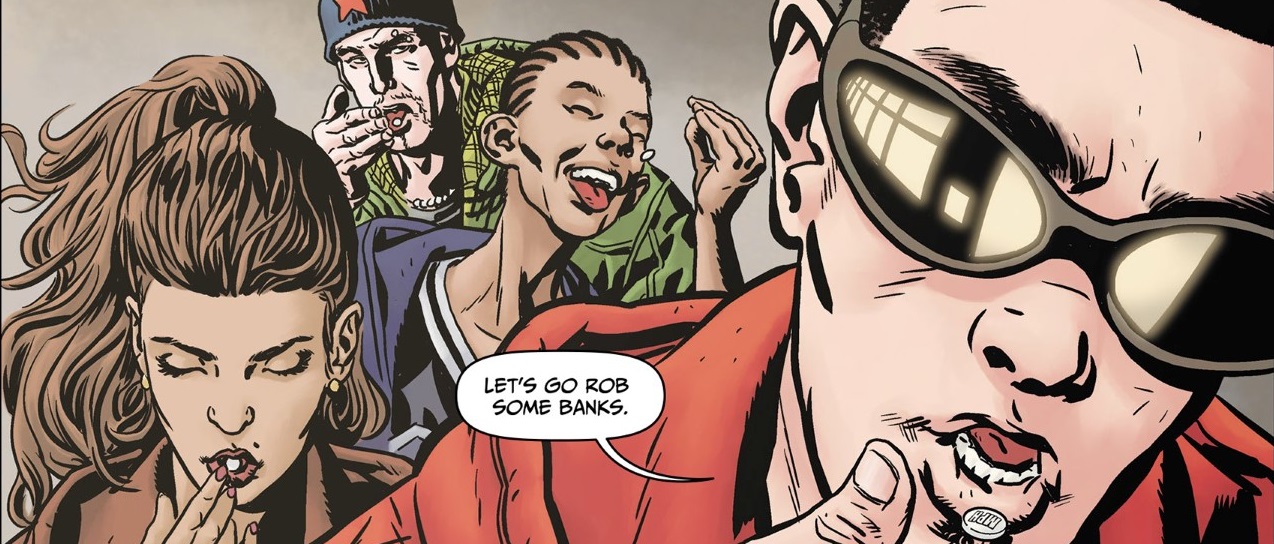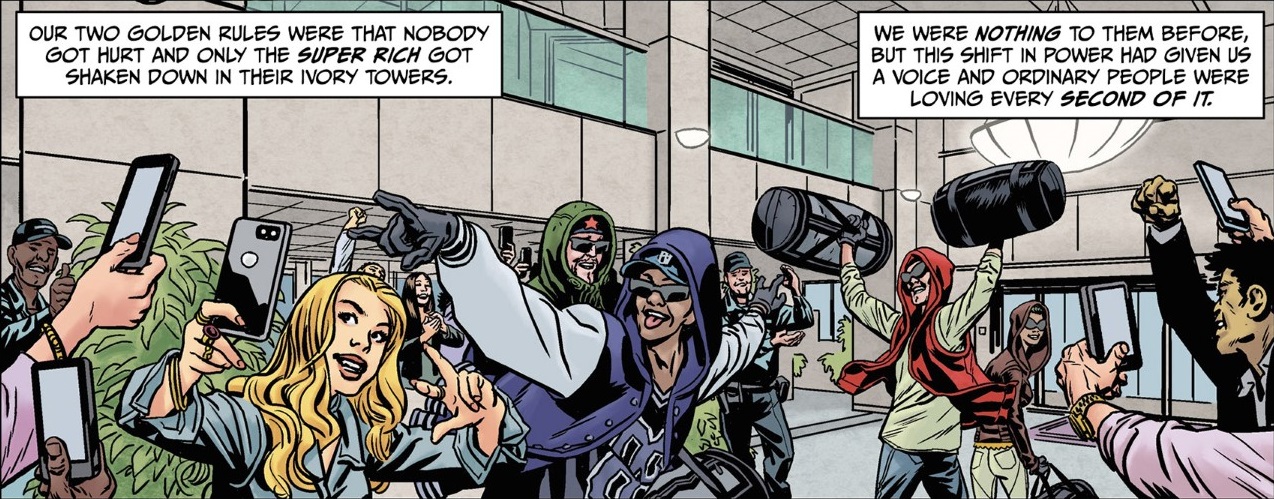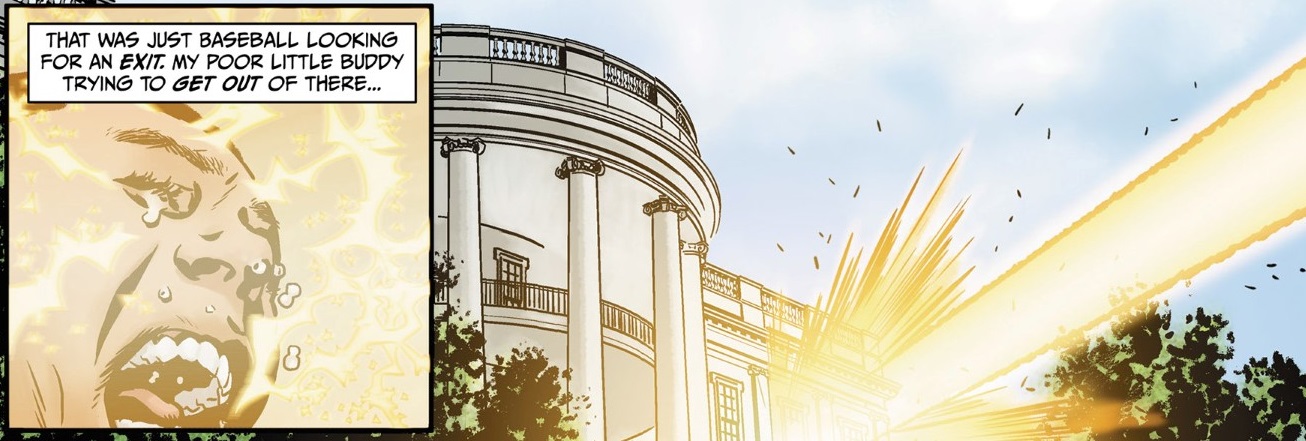MPH #3 Review
"Cut Brakes"
MPH #3 is without a doubt the first non-Starlight comic that Millar has written that has reminded me about why I like Millar. Or rather, why I am giving Millar another chance to steal my heart. The issue, the midpoint of this five issue mini-series, really kicks the story into high gear. Whether or not it goes too far is another matter entirely.

Of all the other Millar series, there is one that I would most liken
MPH to:
SuperCrooks. Like
SuperCrooks,
MPH is a heist story. However,
SuperCrooks was more concerned about just providing the reader with the archetypal clichés of the genre. It had fun set-pieces but little to no character moments that gave us insight to them as actually well-rounded. This is where
MPH beats that series out, the characters are a little more embossed from the story.
There are more character elements, if small, and nuances to the
MPH crew, especially the main character – Roscoe. It’s not complex, and not necessarily incredible depth, but it is there. It is what makes this newest issue both fun and very surprising. To get this out of the way, this issue covers the actual “heist” part of the story, as the quartet of friends begin their crime spree and life of luxury. In most cases it reads like a well done, if a bit typical, breather issue.

It’s fun, there’s not much that can be gone into there. It’s just scene after scene of the four friends using their newly endowed powers to let loose and get what they feel they deserve. The main, central, focus of the issue is Roscoe’s narration about how and why they’re going about this the way they are. It gets a bit long winded at certain junctures, as do most agenda tracts that Millar likes to slip in, but it does a great job at giving a better look into Roscoe’s psyche.
Roscoe began the series as an okay, plainly serviceable, protagonist. So his ideals and goals evolving over the course of the story is an interesting sight, from thinking about his loved ones to becoming a modern day Robin Hood, as are the changes in the members of his group. There’s a bit more given to Chevy, Roscoe’s tougher and grimmer best friend, who looks to be an interesting character to keep an eye on.

The real star, near the end, is Baseball – the kid of the crew who is in it less for the money and more for the fun. Millar pulls out some old
Flash tricks and gives Baseball the double whammy of heart-wrenching moment coupled with speedster power warping. The cliffhanger at the end of this issue could go either way, and while some think that it maybe breaks the tone of the story, in a series with speedsters time travel is a welcome addition.
It doesn’t hurt that Baseball’s scene mentioned above is engagingly and emotionally written, so it easily hooks the reader in. Duncan Fegredo’s art is also on a very beautiful keel. It captures the energy, the youth, and the grime that this book needs to get it moving. It’s fluid, it’s oily, and it’s all around entertaining to take in. My only complaint would be that the main plot has moved not one bit, with two issues left. Placing in new subplots might ruin the stew, but time will tell.
Pros
- Millar's writing is short and sweet yet packs a powerful punch
- Fegredo's art is the perfect fit of fun and functional for this story
- The new plot developments are actually quite interesting
Cons
- The main plot still hasn't moved one bit
- Millar's soap boxing can get really obvious